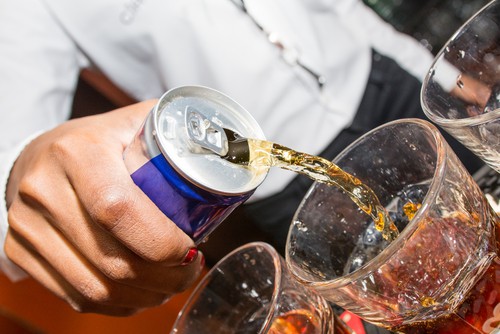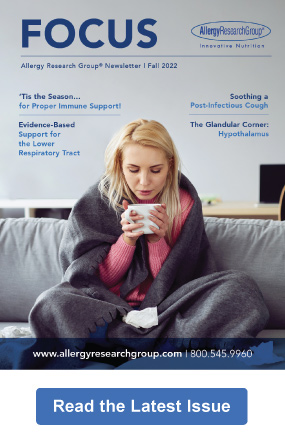Stimulants and Sedatives: The Good, the Bad, and the Ugly
Share this post
Use now, pay later? Problems associated with common stimulants and sedatives
In our go-go-go world, it’s easy to feel drawn to stimulant substances to keep us going and sedatives to help us relax. Whether it’s coffee to get through the day and a glass of wine after work, or medications such as methylphenidates or amphetamines to keep us cognitively “on” and a benzodiazepine to help us wind down later, it’s likely that we all have been somewhere on the spectrum of stimulation and sedation. Not surprisingly, each of these substances comes with an array of potential side effects, particularly when we depend upon them chronically or use them in excess.
Stimulants
Whether it be in coffee, tea, chocolate, or energy drinks, caffeine is the drug of choice for many. Caffeine stimulates the central nervous system, promoting wakefulness and increased attention.[1] Acute caffeine intake has been shown to enhance working memory-related brain activation,[2] enhance post-study memory consolidation,[3] decrease fatigue, improve exercise performance,[4] and increase attention.[5] However, excessive caffeine consumption can cause restlessness, insomnia, headaches, and digestive complaints,[6] while even typical doses can increase urinary urgency and frequency, anxiety, and blood pressure, particularly in sensitive individuals who already experience these challenges.[7],[8],[9] In children, caffeine consumption can adversely affect brain and bone development and increase risk-taking behaviors.[10],[11] Higher caffeine consumption in children is also associated with anxiety and depression.[12] Chronic use of caffeine also has an abuse or dependence potential,[13],[14] as many whom have tried to give up the use of this substance likely have seen, with withdrawal symptoms like headaches,[15] impaired memory,[16] irritability, and mood changes.[17]
Energy drinks mixed with alcohol, a common selection of younger bar and dance club enthusiasts, are associated with binge drinking, alcohol dependence, increased impulsivity, and high-risk behaviors – so much that this habit alone should be considered high-risk drinking.
Energy drinks, of course, bring us caffeine plus an array of energy-stimulating nutrients such as B vitamins, taurine, guarana, ginseng – plus a hefty dose of sugar. Energy drinks mixed with alcohol, a common selection of younger bar and dance club enthusiasts, are associated with binge drinking, alcohol dependence, increased impulsivity[18] and high-risk behaviors[19] – so much that this habit alone should be considered high-risk drinking.[20] Multiple cases of a heartbeat irregularity known as atrial fibrillation after the intake of energy drinks have also been reported in young individuals,[21],[22] shedding light on the concern for heart problems, particularly in individuals with a family history.[23]
Stimulant medications like methylphenidates and amphetamines are seeing a heyday like no other as well, with the rate of prescription of these drugs quadrupling over the last decade.[24],[25] Although in childhood, boys are approximately five times more likely to be prescribed a medication such as these for attention deficit issues,[26] in adulthood, women have a higher rate of stimulant prescription than men.[27] Although prescription rates are high, actual use population wide is far greater, with 5% to 35% of college students reporting non-prescribed stimulant use.[28] There is a high potential for misuse and abuse, as medications such as these affect dopamine pathways,[29],[30] triggering the dopamine reward pathways commonly stimulated in addictions.[31] The dangers of these medications are many. Adverse effects include irregular heart rhythm, insomnia and sleep problems, decreased appetite, headache, abdominal pain, hallucinations, paranoia, delusional disorder, aggressive behavior, irritability, depression, and suicidality.[32],[33]
Sedatives
Many people have a drink or two to help them fall asleep at night. Although alcohol acts as a sedative to promote sleep, many don’t realize that alcohol actually alters sleep patterns, leading to poor sleep quality.[34] Alcohol consumption in higher amounts has been shown to lead to sleep disturbances in the second half of the night, while tolerance also develops to the initial sedative effects. Additionally, alcohol use in the evening can be a contributor to increased issues of gastroesophageal reflux (or “heartburn”) at night, as the normal night-time clearing of the esophagus is impaired by even moderate amounts of alcohol.[35] Alcohol worsens sleep apnea, reducing oxygen levels in the brain during the first hour of sleep.[36] All of these factors can contribute to increased daytime sleepiness and patterns of dependence. The chronic use and abuse of alcohol can contribute to the development of many other health complications including cancer,[37] cardiovascular disease,[38] and dementia,[39] giving us many reasons to avoid dependent or excessive use of this substance.
Although alcohol acts as a sedative to promote sleep, many don’t realize that alcohol actually alters sleep patterns, leading to poor sleep quality.
Another common sedative is first-generation antihistamines, which non-selectively act in the central and peripheral nervous systems. This over-the-counter medication has well-known sleep-promoting effects but has been shown to contribute to mild cognitive deficits in the elderly, causing disorganized speech, delirium symptoms, altered consciousness, and increased need for urinary catheter placement.[40],[41],[42] Common side effects not limited to the elderly include daytime sleepiness, constipation, not being able to urinate completely, dry mouth, blurred vision, and increased eye pressure.[43],[44],[45] Many of these things the elderly are also at greater risk for, and the effects of this medication can easily be overlooked or blamed on “old age.”
Major classes of prescription medications approved for treatment of insomnia include benzodiazepines and nonbenzodiazepine hypnotics. Meta-analysis has shown that benzodiazepines help us fall asleep only 4.2 minutes faster than placebo and significantly increase total sleep duration by 61.8 minutes.[46] Several of the nonbenzodiazepine hypnotics have a short half-life, making them only effective for helping us fall asleep, but not necessarily in keeping us asleep through the night. The extended-release formats are better at keeping us asleep through the night, but may begin to accumulate in the body, and come with the warning that users should not drive or engage in other activities that require complete mental alertness even the next day.[47] Potential side effects with both categories of drug are many, including: performing activities one is not aware of during sleep (eating, having sex, walking), memory impairments, daytime sleepiness, next day impairments, hallucinations, aggressive behavior, inability to form new memories, lightheadedness, motor incoordination, worsening of sleep apnea, and dependence.[40],[48] In the elderly, the use of these medications contribute to falls and cognitive decline,[46],[49] while a dramatic increase in suicide rate has also been seen.[50]
As per many medications and central nervous system-affecting substances, appropriate and non-appropriate use of each of these substances is common. Chronic or excessive use of these drugs may be cause for concern. Thankfully, many nutritional supplements also are available that support sleep and relaxation, as well as healthy energy levels and cognitive function through the day.
Click here to see References
[1] Nehlig A, et al. Caffeine and the central nervous system: mechanisms of action, biochemical, metabolic and psychostimulant effects. Brain Res Brain Res Rev. 1992 May-Aug;17(2):139-70.
[2] Haller S, et al. Acute caffeine administration impact on working memory-related brain activation and functional connectivity in the elderly: a BOLD and perfusion MRI study. Neuroscience. 2013 Oct 10;250:364-71.
[3] Borota D, et al. Post-study caffeine administration enhances memory consolidation in humans. Nat Neurosci. 2014 Feb;17(2):201-3.
[4] Irwin C, et al. Caffeine withdrawal and high-intensity endurance cycling performance. J Sports Sci. 2011 Mar;29(5):509-15.
[5] Lanini J, et al. Acute personalized habitual caffeine doses improve attention and have selective effects when considering the fractionation of executive functions. Hum Psychopharmacol. 2016 Jan;31(1):29-43.
[6] Wierzejska R. [Caffeine–common ingredient in a diet and its influence on human health]. Rocz Panstw Zakl Hig. 2012;63(2):141-7.
[7] Wells MJ, et al. The effect of caffeinated versus decaffeinated drinks on overactive bladder: a double-blind, randomized, crossover study. J Wound Ostomy Continence Nurs. 2014 Jul-Aug;41(4):371-8.
[8] Smith JE, et al. Storm in a coffee cup: caffeine modifies brain activation to social signals of threat. Soc Cogn Affect Neurosci. 2012 Oct;7(7):831-40.
[9] Lopez-Garcia E, et al. Habitual coffee consumption and 24-h blood pressure control in older adults with hypertension. Clin Nutr. 2016 Dec;35(6):1457-1463.
[10] Ali E, et al. Caffeine is a risk factor for osteopenia of prematurity in preterm infants: a cohort study. BMC Pediatr. 2018 Jan 22;18(1):9.
[11] Temple JL, et al. Effects of acute and chronic caffeine on risk-taking behavior in children and adolescents. J Psychopharmacol. 2017 May;31(5):561-568.
[12] Richards G, Smith A. Caffeine consumption and self-assessed stress, anxiety, and depression in secondary school children. J Psychopharmacol. 2015 Dec;29(12):1236-47.
[13] Jain S, et al. Caffeine addiction: Need for awareness and research and regulatory measures. Asian J Psychiatr. 2017 Feb 4.
[14] Ogawa N, Ueki H. Clinical importance of caffeine dependence and abuse. Psychiatry Clin Neurosci. 2007 Jun;61(3):263-8.
[15] Sjaastad O, Bakketeig LS. Caffeine-withdrawal headache. The Vågå study of headache epidemiology. Cephalalgia. 2004 Apr;24(4):241-9.
[16] Palmer MA, et al. Caffeine cravings impair memory and metacognition. Memory. 2017 Oct;25(9):1225-1234.
[17] Dews PB, et al. Caffeine: behavioral effects of withdrawal and related issues. Food Chem Toxicol. 2002 Sep;40(9):1257-61.
[18] Snipes DJ, et al. Alcohol mixed with energy drinks are robustly associated with patterns of problematic alcohol consumption among young adult college students. Addict Behav. 2015 Feb;41:136-41.
[19] Brache K, Stockwell T. Drinking patterns and risk behaviors associated with combined alcohol and energy drink consumption in college drinkers. Addict Behav. 2011 Dec;36(12):1133-40.
[20] Bigard AX. [Risks of energy drinks in youths]. Arch Pediatr. 2010 Nov;17(11):1625-31.
[21] Di Rocco JR, et al. Atrial fibrillation in healthy adolescents after highly caffeinated beverage consumption: two case reports. J Med Case Rep. 2011 Jan 19;5:18.
[22] Sattari M, et al. Energy Drink Consumption and Cardiac Complications: A Case for Caution. J Addict Med. 2016 Jul-Aug;10(4):280-2.
[23] Gray B, et al. Cardiovascular Effects of Energy Drinks in Familial Long QT Syndrome: A Randomized Cross-Over Study. Int J Cardiol. 2017 Mar 15;231:150-154.
[24] Olfson M, et al. National trends in the use of psychotropic medications by children. J Am Acad Child Adolesc Psychiatry. 2002 May;41(5):514-21.
[25] Anderson KN, et al. Attention-Deficit/Hyperactivity Disorder Medication Prescription Claims Among Privately Insured Women Aged 15-44 Years – United States, 2003-2015. MMWR Morb Mortal Wkly Rep. 2018 Jan 19;67(2):66-70.
[26] Renoux C, et al. Prescribing trends of attention-deficit hyperactivity disorder (ADHD) medications in UK primary care, 1995-2015. Br J Clin Pharmacol. 2016 Sep;82(3):858-68.
[27] Safer DJ. Recent Trends in Stimulant Usage. J Atten Disord. 2016 Jun;20(6):471-7.
[28] Wilens TE, et al. Misuse and diversion of stimulants prescribed for ADHD: a systematic review of the literature. J Am Acad Child Adolesc Psychiatry. 2008 Jan;47(1):21-31.
[29] Clemow DB, et al. Misuse of Methylphenidate. Curr Top Behav Neurosci. 2017;34:99-124.
[30] Casey KF, et al. Reduced dopamine response to amphetamine in subjects at ultra-high risk for addiction. Biol Psychiatry. 2014 Jul 1;76(1):23-30.
[31] Franken IH, et al. The role of dopamine in human addiction: from reward to motivated attention. Eur J Pharmacol. 2005 Dec 5;526(1-3):199-206.
[32] Storebø OJ, et al. Methylphenidate for attention deficit hyperactivity disorder (ADHD) in children and adolescents – assessment of adverse events in non-randomised studies. Cochrane Database Syst Rev. 2018 May 9;5:CD012069.
[33] Morton WA, Stockton GG. Methylphenidate Abuse and Psychiatric Side Effects. Prim Care Companion J Clin Psychiatry. 2000 Oct;2(5):159-164.
[34] Roehrs T, Roth T. Sleep, sleepiness, sleep disorders and alcohol use and abuse. Sleep Med Rev. 2001 Aug;5(4):287-297.
[35] Vitale GC, et al. The effect of alcohol on nocturnal gastroesophageal reflux. JAMA. 1987 Oct 16;258(15):2077-9.
[36] Issa FG, Sullivan CE. Alcohol, snoring and sleep apnea. J Neurol Neurosurg Psychiatry. 1982 Apr;45(4):353-9.
[37] Jin M, et al. Alcohol drinking and all cancer mortality: a meta-analysis. Ann Oncol. 2013 Mar;24(3):807-16.
[38] Di Castelnuovo A, et al. Alcohol dosing and total mortality in men and women: an updated meta-analysis of 34 prospective studies. Arch Intern Med. 2006 Dec 11-25;166(22):2437-45.
[39] Topiwala A, et al. Moderate alcohol consumption as risk factor for adverse brain outcomes and cognitive decline: longitudinal cohort study. BMJ. 2017 Jun 6;357:j2353.
[40] Tannenbaum C, et al. A systematic review of amnestic and non-amnestic mild cognitive impairment induced by anticholinergic, antihistamine, GABAergic and opioid drugs. Drugs Aging. 2012 Aug 1;29(8):639-58.
[41] Basu R, et al. Sedative-hypnotic use of diphenhydramine in a rural, older adult, community-based cohort: effects on cognition. Am J Geriatr Psychiatry. 2003 Mar-Apr;11(2):205-13.
[42] Agostini JV, et al. Cognitive and other adverse effects of diphenhydramine use in hospitalized older patients. Arch Intern Med. 2001 Sep 24;161(17):2091-7.
[43] National Institutes of Health. National Institutes of Health State of the Science Conference statement on Manifestations and Management of Chronic Insomnia in Adults, June 13-15, 2005. Sleep. 2005 Sep;28(9):1049-57.
[44] Cancelli I, et al. Drugs with anticholinergic properties: cognitive and neuropsychiatric side-effects in elderly patients. Neurol Sci. 2009 Apr;30(2):87-92.
[45] Mintzer J, Burns A. Anticholinergic side-effects of drugs in elderly people. J R Soc Med. 2000 Sep;93(9):457-62.
[46] Holbrook AM, et al. Meta-analysis of benzodiazepine use in the treatment of insomnia. CMAJ. 2000 Jan 25;162(2):225-33.
[47] FDA Drug Safety Communication: FDA approves new label changes and dosing for zolpidem products and a recommendation to avoid driving the day after using Ambien CR. Safety Announcement, 5/14/2013.
[48] Buscemi N, et al. The efficacy and safety of drug treatments for chronic insomnia in adults: a meta-analysis of RCTs. J Gen Intern Med. 2007 Sep;22(9):1335-50.
[49] Tannenbaum C, et al. Sedative-hypnotic medicines and falls in community-dwelling older adults: a cost-effectiveness (decision-tree) analysis from a US Medicare perspective. Drugs Aging. 2015 Apr;32(4):305-14.
[50] Carlsten A, Waern M. Are sedatives and hypnotics associated with increased suicide risk of suicide in the elderly? BMC Geriatr. 2009 Jun 4;9:20.
The information provided is for educational purposes only. Consult your physician or healthcare provider if you have specific questions before instituting any changes in your daily lifestyle including changes in diet, exercise, and supplement use.
Share this post
Dr. Carrie Decker
Related posts
Inflammation Drives Depression
Move over serotonin, inflammation is the new target of depression treatment Is inflammation a bad thing? Not necessarily: Inflammation helps the cells of the immune system fight infections and repair injuries. Like many things, however, the key to inflammation is balance – not too much, and not too little. Too little inflammation allows infections…
Ways to Ease Inflammation and Depression
Smart lifestyle choices for a happy brain and healthy mood In last week’s post we explored the ways in which inflammation can cause depression. The science shows that we cannot blame genetics alone for depression. That’s a good thing: it means there is a lot we can do to heal our brains. Here are…
Adrenal Fatigue, Adrenal Insufficiency, or Something Else?
How stress impacts us all “I’m so exhausted all the time, I think I have adrenal failure.” “My friend told me her naturopath said her that her adrenals crashed and I think mine have too.” “I took a test and my cortisol was low and my chiropractor told me I have adrenal fatigue.” If…
Biohacks for a Calmer, Happier, More Focused You (Video)
Meet your new best friend – your vagus nerve. Through simple biohacks, we can use our bodies to affect our mood, focus, and productivity. In this video, naturopathic physician Dr. Erica Zelfand introduces the vagus nerve – a nerve that travels from the head to the throat, heart, lungs, kidneys, digestive tract, and even…
Lactobacillus plantarum DR7: A Probiotic For Stress Relief
When I was a young athlete, I would get sick to my stomach before every big game, race, or match. The stress I felt always manifested in my gut. Many people experience feelings of a “nervous stomach” because our brain and our gut are so intricately intertwined. Sayings like “trust your gut”, “feel it…
From Childhood to the Elderly: Evidence for Melatonin
An array of clinical research shows the safety and efficacy of melatonin in healthy and compromised populations Many a time in life when the stress hormones are flying, we also have the unfortunate experience of struggling to sleep. The experience of insomnia is not uncommon, with about one-third to two-thirds of adults experiencing insomnia…
Categories
- Botanicals (56)
- GI Health (53)
- Healthy Aging (121)
- Immune Support (39)
- In The News (39)
- Kids Health (21)
- Stress and Relaxation (50)
- Uncategorized (1)
- Video (9)
- Vitamins & Minerals (51)




